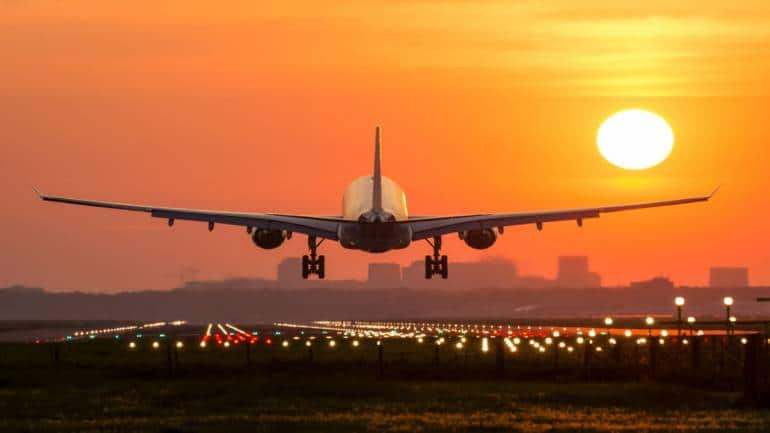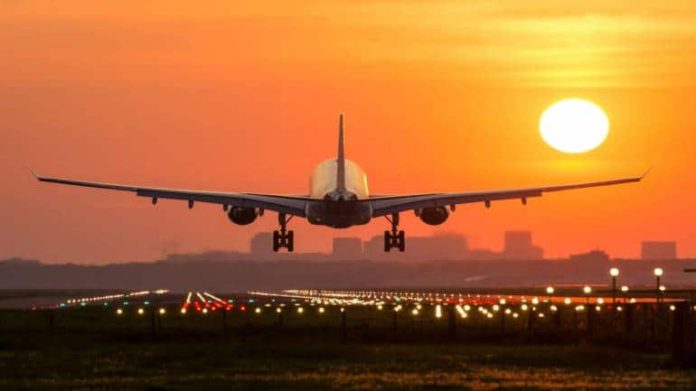


The jury is still out on whether there will be a possible recession. It is, however, possible that the initial euphoria for revenge tourism could slow down later, just as cargo traffic diminished after scheduled services started (Representative image)
Indian civil aviation has gone through many revolutions, the first being in 1993, when private players were welcomed. Between 2004 and 2006, more followed, with the next set of players entering the market, including low-cost carriers. Since then there has been one constant in Indian aviation: new planes and large orders.
IndiGo, now the largest carrier in Indian skies, led the way by placing an order for 100 A320 aircraft at the Paris Air show in 2005. Go FIRST (then Go Air) also relies on newer planes and so does Vistara. The newest entrant, Akasa Air, also has an order for 72 Boeing MAX planes, all coming fresh from the factory.
= 768 && (adKey.indexOf(“Moneycontrol”) != -1) && (adKey.indexOf(“Moneycontrol_Mobile_WAP”) = 768 && (adKey.indexOf(“MC_ENG_DESKTOP”) != -1 ) && (adKey.indexOf(“MC_ENG_PWA”) < 0) ){ setTimeout(function() {googletag.cmd.push(function() { googletag.display("MC_ENG_PWA/MC_ENG_PWA_NEWS/MC_ENG_PWA_BUSINESS_AS/MC_ENG_PWA_ROS_NWS_BUS_AS_ATF_300") });}, 2000); }if (width
Last week, Vistara increased the frequency of its flights to Paris and Frankfurt. However, the additional aircraft it has deployed are not from the original order but have been leased from a lessor. The planes earlier operated with China’s Hainan Airlines, which faced headwinds and had to return many aircraft.
Vistara is not the only one relying on older planes for its expansion. A handful of B777s, which operated with Delta Air Lines, will make their way to Air India with a few almost ready in Singapore. While the leased aircraft helped Vistara add frequencies to Frankfurt and Paris, these five aircraft will help Air India connect Mumbai and Bengaluru to San Francisco, in addition to adding frequencies to Canada and the United States.
The Tata group airlines are not the only ones relying on older planes to expand. IndiGo could look at a mix of wet and dry leases, the airline’s top management said during the post-results analyst call. More importantly, it would be taking on wet-lease aircraft from Turkish Airways to ply between India and Turkey, which will take the load off the A321s that would otherwise have to be deployed.
One decision, many changes
The decisions the airlines have taken are not easy. Vistara, which has already inducted its planes and started commercial operations, will have a different seating configuration for this lone aircraft compared to the other two it has.
For Vistara, the class of service remains the same but that is not the case for Air India and IndiGo. Air India, which hitherto operated the B77L in a three-class configuration — First, Business and Economy — will continue three-class operations but as Business, Premium Economy and Economy. This will be the first experience with Premium Economy for Air India.
= 768 && (adKey.indexOf(“Moneycontrol”) != -1) && (adKey.indexOf(“Moneycontrol_Mobile_WAP”) = 768 && (adKey.indexOf(“MC_ENG_DESKTOP”) != -1 ) && (adKey.indexOf(“MC_ENG_PWA”) < 0) ){ setTimeout(function() {googletag.cmd.push(function() { googletag.display("MC_ENG_PWA/MC_ENG_PWA_NEWS/MC_ENG_PWA_BUSINESS_AS/MC_ENG_PWA_ROS_NWS_BUS_AS_BTF_300") });}, 2000); }if (width
IndiGo has always been a mono class operator but the wet-leased widebody aircraft are likely to see a two-class configuration with Business and Economy. This will be the first time the airline operates a Business class.
A wet lease involves the aircraft and the crew, while a dry lease involves just the aircraft. To comply with Indian regulations, cabin crew members of Indian carriers are part of a wet-lease arrangement.
Expand no matter what
Air India, Vistara and IndiGo have one common agenda: expansion. While Vistara is looking to increase frequency and have a broader presence in the market, for Air India, the goal is to capture new markets and deter others, especially US carriers, from entering those routes.
The stakes are higher for Air India as the war in Europe has led to Russian airspace not being available for North American carriers, leading to those carriers either vacating the market, opting for one-stop flights or reducing frequency drastically. Air India, on the other hand, has permission to overfly Russia and that gives the carrier the fastest non-stop flights between India and North America in most cases. Until the airspace issue is resolved, Air India thus has an edge over the rest.
Meanwhile IndiGo will get a head start in the market with the widebody wet lease. In 2017, the airline had tried talking to the government to buy out Air India’s international operations along with those of Air India Express. The airline has had its eyes set on this move for long, but was thwarted for one reason or the other, including disagreements between the founders, engine issues and then the onset of the COVID-19 pandemic.
The jury is still out on whether there will be a possible recession. It is, however, possible that the initial euphoria for revenge tourism could slow down later, just as cargo traffic diminished after scheduled services started. But where do things go from here? Vistara could wait for its own planes to become available, allowing the owners the time they need to decide whether to merge it with Air India to form one large airline group with two arms: full service and low-cost,
IndiGo could play a longer wait-and-watch game to assess the cost and commitment involved in widebody operations, and will hope that the wet-lease model during peak season will work out well till then. For Air India, an order for new aircraft is definitely round the corner, but until then, will it deploy more used widebody aircraft? It won’t be surprising if that happens considering the current supply chain challenges, which are leading to delays in availability of new aircraft.

